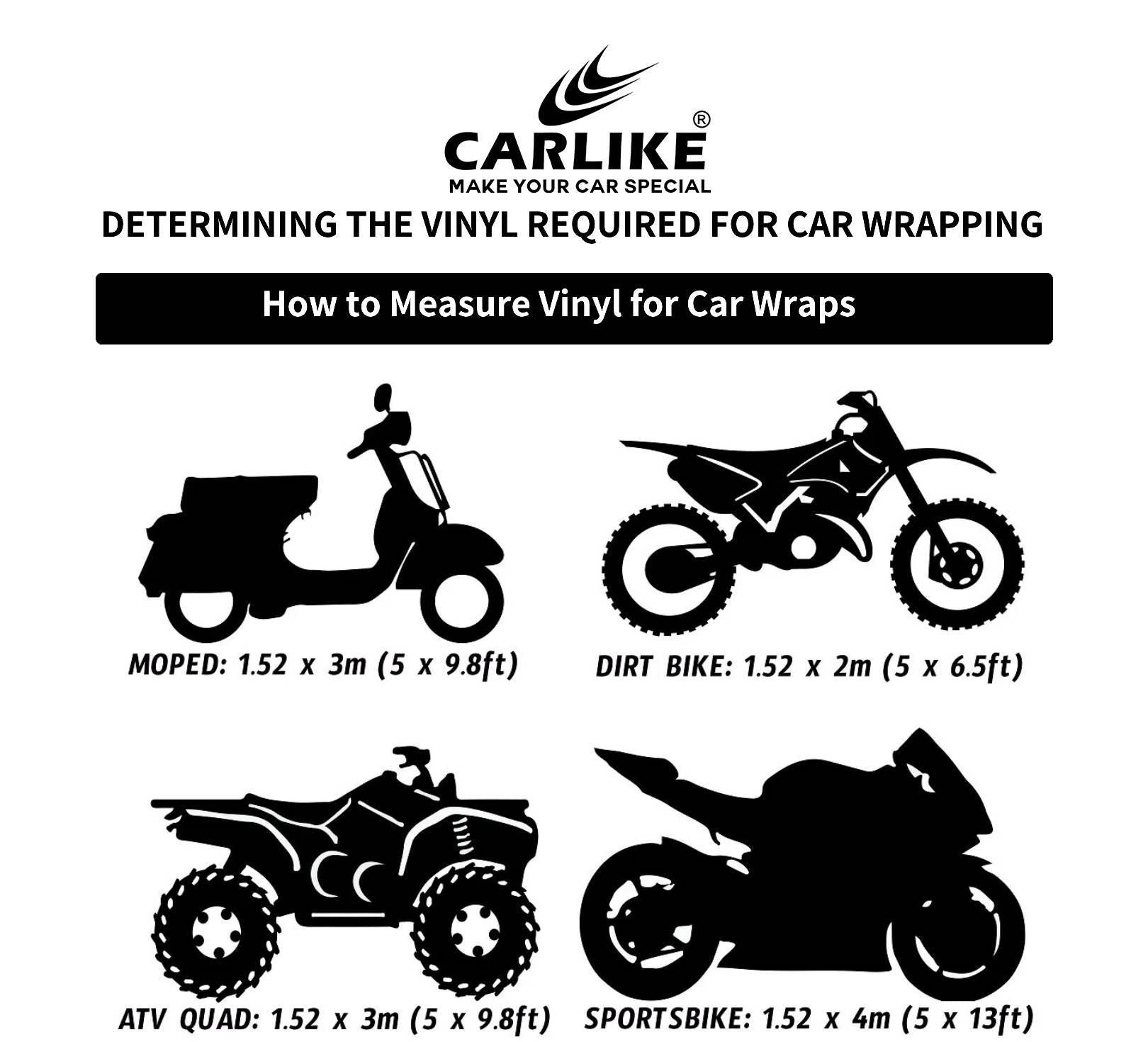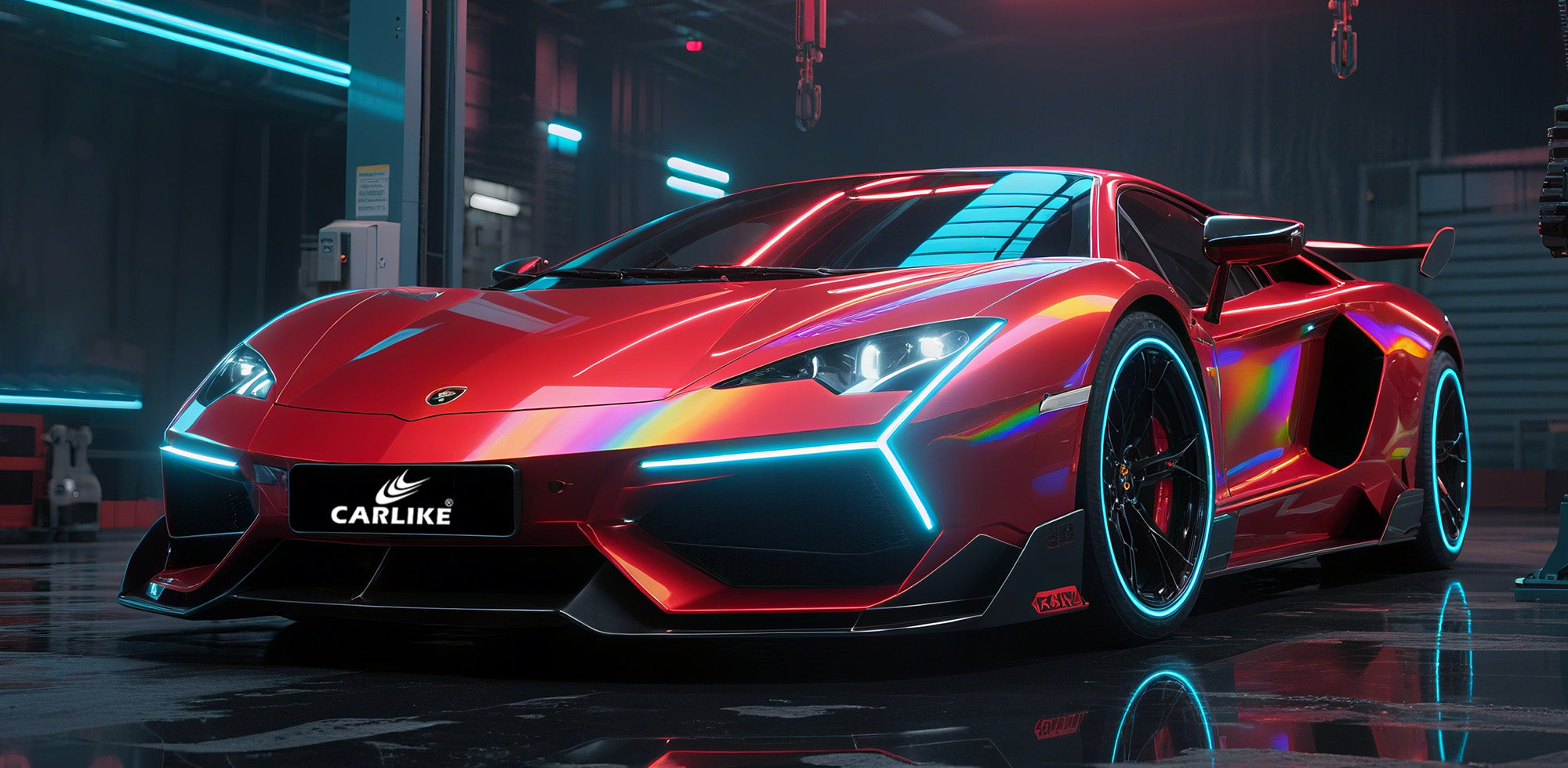ABOUT CARLIKE
CARLIKE® launched in 2012, mainly focus on premium car wrapping vinyls, with rich colors and stylish designs. High performance with economic price is always the persuit of CARLIKE®.
CARLIKE-Make Your Car Special.
Introduction of Carbon Fiber Wraps
Definition and Uses of Carbon Fiber Wrap
Definition: Carbon fiber wrap, also known as carbon fiber vinyl film or carbon fiber film, is a synthetic material designed to mimic the appearance of real carbon fiber. It is typically made from vinyl or other polymer materials that are textured and layered to resemble the distinctive weave pattern and glossy finish of carbon fiber.
Uses: Carbon fiber vinyl is widely used in automotive customization and interior/exterior detailing. Its primary uses include:
Vehicle Wrapping: Applied to car exteriors, interior trims, and accents to give a high-end, sporty look without the expense of real carbon fiber parts.
Electronic Gadgets: Wrapping on smartphones, laptops, and other gadgets for a sleek, modern appearance and added protection.
Furniture and Home Decor: Applied to furniture surfaces, wall panels, and accessories for a contemporary aesthetic in interior design.
Sports Equipment: Used on bicycles, helmets, and sports gear for lightweight and stylish enhancements.
Brief History and Rise in Popularity
History: Carbon fiber itself was developed in the 1950s, primarily for aerospace and military applications due to its lightweight and high-strength properties. As the material became more accessible and manufacturing techniques advanced, carbon fiber began to be used in automotive racing and high-performance vehicles in the 1970s and 1980s.
The introduction of carbon fiber films emerged as a cost-effective alternative to real carbon fiber components in the early 2000s. This coincided with advancements in vinyl wrap technology, allowing for realistic textures and finishes that closely mimic the appearance of carbon fiber.
Rise in Popularity: The popularity of carbon fiber films soared in the automotive aftermarket and customization industries due to several factors:
Cost-Effective Alternative: Real carbon fiber parts are expensive to manufacture and install. Carbon fiber films offer a more affordable way to achieve a similar aesthetic.
Versatility and Ease of Application: Vinyl films are flexible and can conform to complex shapes, making them suitable for various applications on vehicles and other surfaces.
Customization Options: Available in different colors, textures, and finishes, carbon fiber films allow for personalization and creativity in design.
Maintenance and Durability: Carbon fiber films are generally durable, resistant to UV rays and weathering, and easier to maintain compared to real carbon fiber, which requires special care.
Types of Carbon Fiber Wrap
Types of Carbon Fiber Wraps
-
3D Carbon Fiber Wrap
- Description : Features a textured surface that mimics the look and feel of real carbon fiber. It provides a realistic appearance and is typically used for interior and exterior detailing.
-
Available Colors:
- Black
- White
- Red
- Blue
- Silver
- Patterns : Traditional carbon fiber weave pattern with a textured finish.
-
4D Carbon Fiber Wrap
- Description : Offers a glossy finish that provides a more realistic look compared to 3D films. The 4D vinyl combines texture and gloss to enhance the visual depth of the carbon fiber pattern.
-
Available Colors:
- Black
- White
- Red
- Blue
- Gold
- Silver
- Patterns : More intricate and glossy carbon fiber weave pattern.
-
5D Carbon Fiber Wrap
- Description : Features a high-gloss finish with a deep 3D effect that creates a more convincing carbon fiber look. The 5D vinyl is known for its superior visual depth and reflection.
-
Available Colors:
- Black
- White
- Red
- Blue
- Gold
- Silver
- Patterns : High-gloss carbon fiber weave pattern with enhanced depth and reflection.
-
6D Carbon Fiber Wrap
- Description : Offers the highest gloss and depth among carbon fiber films, providing a mirror-like finish. The 6D vinyl is designed for maximum visual impact.
-
Available Colors:
- Black
- White
- Red
- Blue
- Gold
- Silver
- Green
- Purple
- Patterns : Ultra-glossy carbon fiber weave pattern with the most realistic appearance.
-
Forged Carbon Fiber Wrap
- Description : Mimics the look of forged carbon fiber, which has a unique, marbled pattern created by compressing chopped carbon fibers. This type of vinyl offers a distinctive and modern look.
-
Available Colors:
- Black
- Grey
- Silver
- Various custom colors
- Patterns : Randomized marbled pattern that replicates the look of forged carbon fiber.
Available Colors and Patterns
- Black : The most common and traditional color, suitable for a classic carbon fiber look.
- White : Offers a clean and modern aesthetic, ideal for a contrasting look.
- Red : Adds a bold and sporty appearance to any vehicle.
- Blue : Provides a cool and unique look, often used for a more customized appearance.
- Gold : Adds a luxurious and eye-catching finish.
- Silver : Offers a sleek and sophisticated look.
- Green : Provides a vibrant and distinctive appearance.
- Purple : Adds a unique and stylish touch.
- Custom Colors : Various manufacturers offer custom colors to match specific design preferences.
Installation Process of Carbon Fiber Wrap
Preparation Steps
-
Gather Materials:
- Carbon fiber vinyl film
- Squeegee
- Heat gun
- Utility knife
- Microfiber cloth
- Isopropyl alcohol or surface cleaner
- Masking tape
- Measuring tape
-
Clean the Surface:
- Thoroughly wash the car to remove dirt and grime.
- Use isopropyl alcohol or a surface cleaner to wipe down the area to be wrapped.
- Ensure the surface is completely dry before proceeding.
-
Measure and Cut:
- Measure the area to be wrapped and add an extra 2-3 inches to the measurements.
- Cut the carbon fiber vinyl to the required size using a utility knife or scissors.
-
Remove Obstacles:
- Remove any removable parts such as badges, mirrors, and handles that may obstruct the wrapping process.
-
Test Fit:
- Place the film on the surface to ensure it fits correctly. Adjust if necessary.
Application Techniques
-
Position the Wrap:
- Peel the backing paper off a small section of the film and align it to the starting point on the vehicle.
- Use masking tape to hold the wrap in place if needed.
-
Apply the Wrap:
- Slowly peel off the backing paper while using a squeegee to press the wrap onto the surface.
- Start from the center and work outwards to avoid air bubbles.
- Use the heat gun to gently warm the wrap, making it more pliable and easier to conform to the contours of the vehicle.
-
Smooth and Stretch:
- Use the squeegee to smooth out the wrap, applying firm pressure to ensure good adhesion.
- For complex curves, gently stretch the wrap using the heat gun and squeegee to fit it snugly around the curves.
-
Trim Excess Wrap:
- Once the wrap is fully applied, use a utility knife to carefully trim off any excess material.
- Be precise to avoid cutting into the vehicle's paint.
-
Post-Application:
- Go over the entire wrapped surface with the heat gun to ensure proper adhesion and to remove any remaining air bubbles.
- Pay extra attention to the edges and seams.
Common Mistakes to Avoid
-
Inadequate Surface Cleaning:
- Failing to clean the surface thoroughly can lead to poor adhesion and visible imperfections.
-
Rushing the Process:
- Take your time to align and apply the wrap correctly. Rushing can result in misalignment and trapped air bubbles.
-
Overstretching the Wrap:
- Be careful not to overstretch the wrap, as this can cause distortion of the carbon fiber pattern and weaken the material.
-
Improper Use of Heat Gun:
- Avoid overheating the wrap, which can cause it to warp or melt. Use moderate heat to make the wrap pliable.
-
Neglecting Post-Application Steps:
- Skipping the final heating step can result in poor adhesion and potential lifting of the wrap over time.




